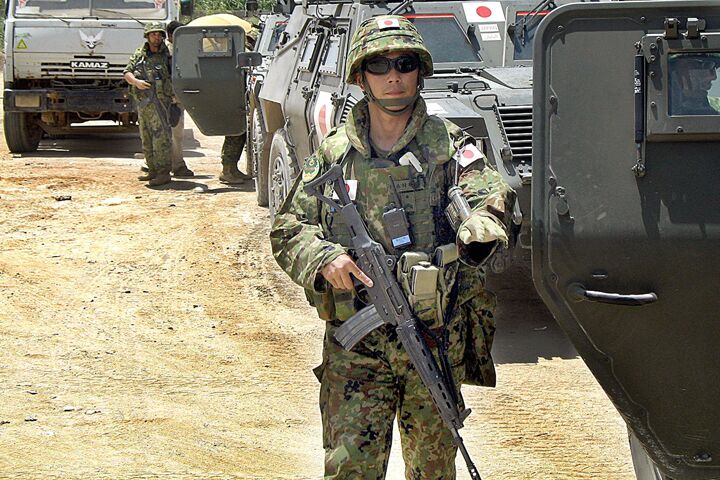
Japan Continues to Break Military Taboos
Japan’s impressive navy and high-tech prowess has long made it a formidable military power. So why are some people alarmed by the changes currently taking place within the Japanese military? Since World War ii, the Japanese military has been driven by constitutional restraints renouncing war and allowing use of force strictly in a defensive capacity. But after 60 years as a defensive force, the Japanese military is being driven by a new motivation—an offensive motivation!
The New York Times recently reported on the evolution underway within the Japanese military, noting that the nation is breaking many historical taboos. “[F]rom … Micronesia to Iraq, Japan’s military has been rapidly crossing out items from its list of can’t-dos. The incremental changes, especially since the attacks of Sept. 11, 2001, amount to the most significant transformation in Japan’s military since World War ii, one that has brought it ever closer operationally to America’s military while rattling nerves throughout northeast Asia” (July 23).
Japan has spent the last half-decade making changes that would have been considered “unthinkable” just a few years earlier, reported the Times. Japanese destroyers and refueling vessels are operating in support of the United States and other nations engaged in Afghanistan. Japanese transport planes are carrying cargo and American troops from Kuwait to Baghdad.
The Japanese military was once a defensive force; now its presence is being felt internationally.
The Times also noted that “Japan is acquiring weapons that blur the lines between defensive and offensive.” In a joint military exercise with the U.S. Air Force in Guam in June, Japan practiced dropping 500-pound live bombs. “Dropping live bombs on land had long been considered too offensive, so much so that Japan does not have a single live-bombing range” (ibid.).
The bombs were dropped from Japan’s newest F-2 fighter jets, which flew the 1,700 miles from Japan to Guam non-stop and without refueling.
“Flying directly from Japan and practicing live-bombing runs on distant foreign soil would have been regarded as unacceptably provocative because the implicit message was clear: These fighter jets could perhaps fly to North Korea and take out some targets before returning home safely” (ibid.).
In an effort to add to its F-2 complement, which was developed jointly with the U.S., the Japanese military has also requested approval from the U.S. government to purchase F-22 Raptors. The Raptor is a stealth fighter jet acclaimed for its offensive capabilities, which include penetrating contested airspace and destroying enemy targets. Japan’s requests have gained little traction with the American government, with the U.S. Congress banning the export or licensing of the F-22 in an effort to safeguard American technology.
Congressional denial has not dampened Japan’s zeal for the advanced fighter jet, however. The International Herald Tribune reported this week that Japan’s Defense Ministry was preparing “plans to develop a prototype of an advanced fighter jet in the hope it will spur the United States to review a ban on selling F-22 fighters” (July 24). Why would a supposedly defensive military be so determined to acquire such deadly offensive fighter jets?
Clearly the Japanese military is assuming an offensive posture.
Beyond upgrading the offensive capabilities of its military hardware, the Japanese government is tinkering with the political and constitutional restraints governing its military. Earlier this year, the Defense Agency, which has long been a low-profile department within the Japanese government, was upgraded to a full ministry. Additionally, Prime Minister Shinzo Abe shepherded a law through parliament earlier this year that could lead to a revision of Japan’s pacifist Constitution, a move which is now accepted by an increasing number of Japanese.
Critics of the transformation occurring with the Japanese military say that the government has already violated the Constitution and has taken on unprecedented offensive capabilities.
Despite this opposition, the military evolution unfolding in Japan is almost certain to continue. In fact, it is likely that in the near future the Japanese government will indeed rewrite its Constitution. After all, what is the purpose of Japan having a Constitution that demands a defensive military posture when in reality, its military is evolving into one of the most deadly offensive forces in the world?
The greater significance of Japan’s military transformation is explained in Russia and China in Prophecy.
